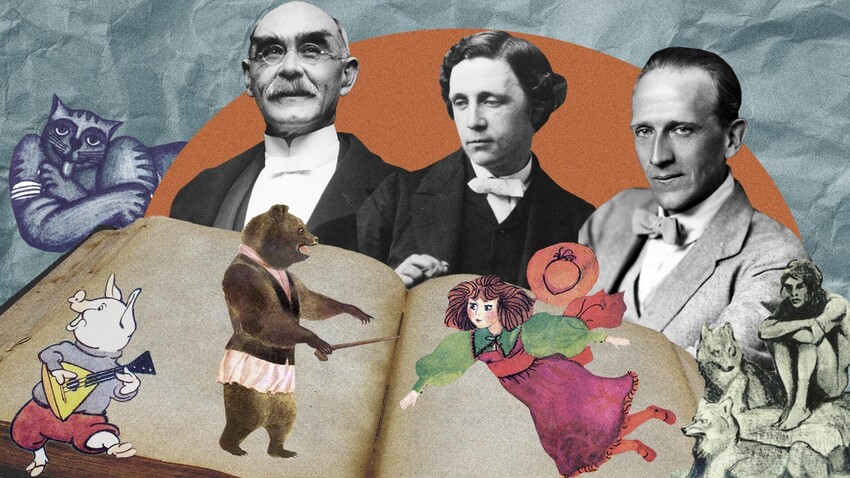
The Soviet school of graphics was not all about political posters: the artists achieved no less success in illustrating children’s books. This is how they saw the English-born fairy tale characters.
Lewis Carroll’s book was first translated into Russian back in 1879, but instantly faced a storm of criticism. “The small overpriced book, which is full of orthographic mistakes, tells an unbearably boring story, which looks like morbid convoluted ramblings of ill-fated girl Sonya. The depiction of those ramblings is in no way creative, and there is nothing like wittiness or fun in it,” People’s and Children’s Library magazine wrote. The surreal story shot to fame in the USSR, though, in large part due to Boris Zakhoder’s translation, published in 1971 in the Pioneer magazine, one of the most popular kids’ magazines in the country. The subsequent editions were eagerly illustrated by top Soviet artists, and in 1981, a three-episode cartoon came out. In different years, a number of artists made illustrations for Carroll’s story, namely Gennady Kalinovsky, Irina Kazakova, Nikolay Kozlov, Andrey Gennadiev, Lidia Shulgina and Viktor Shatunov.


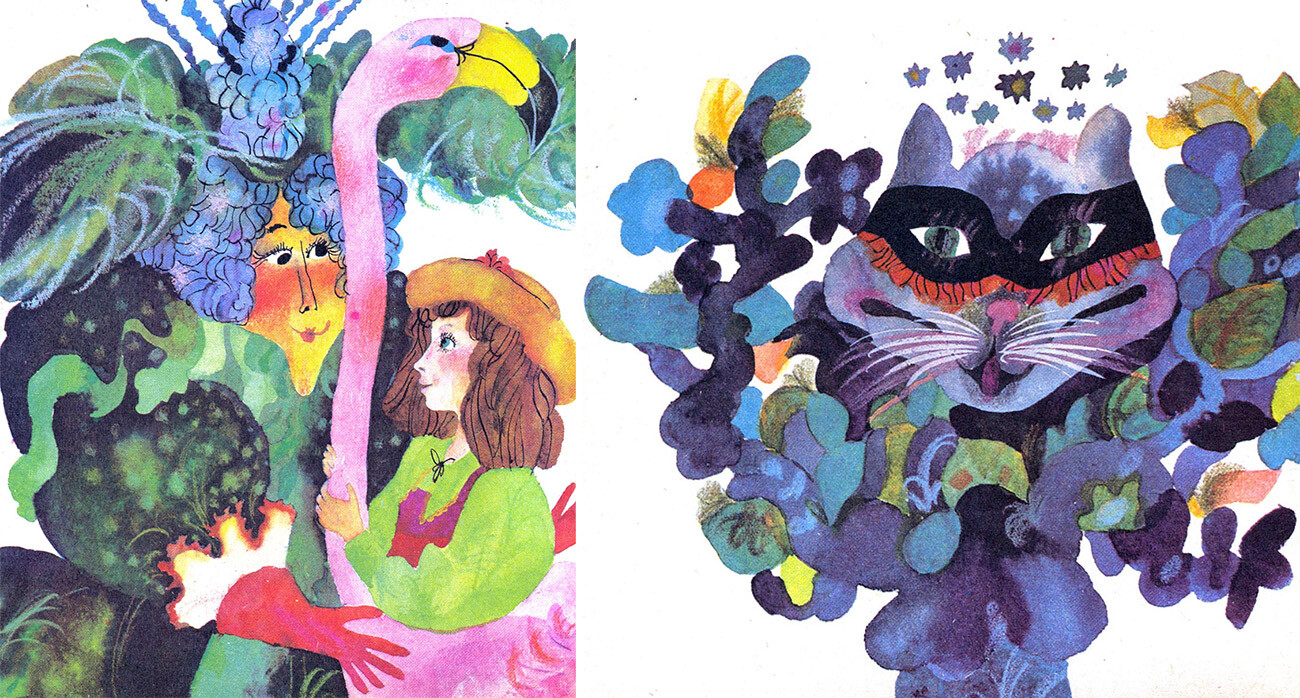
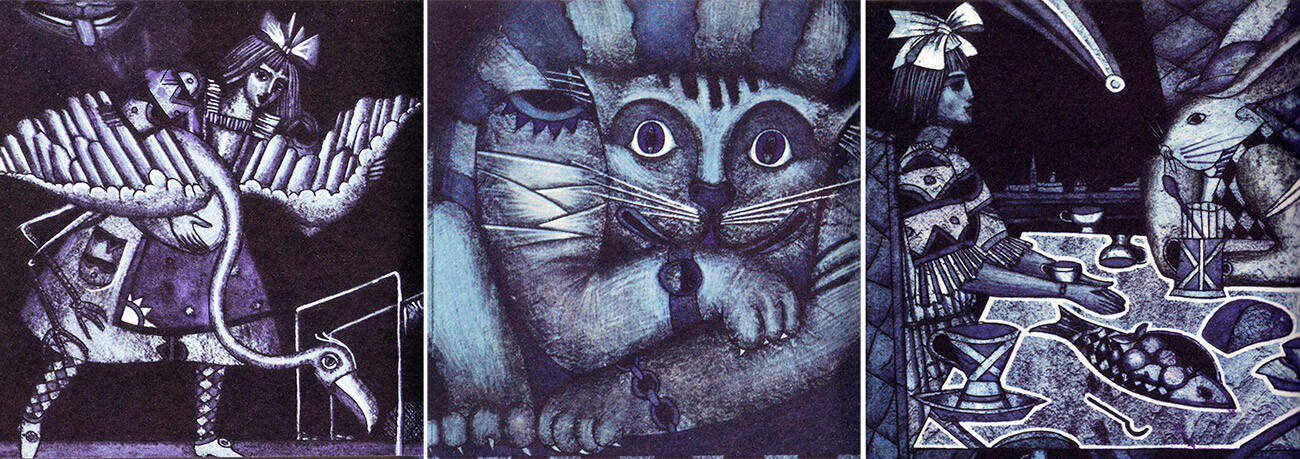
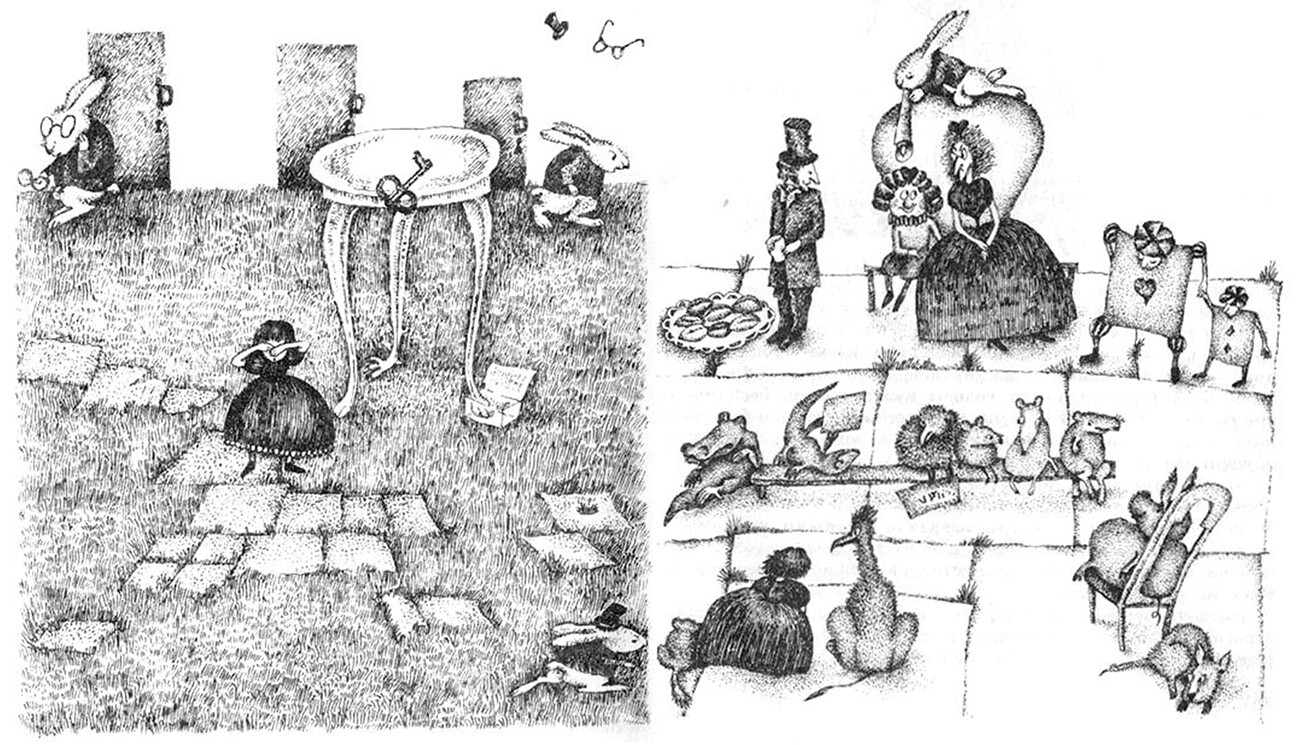
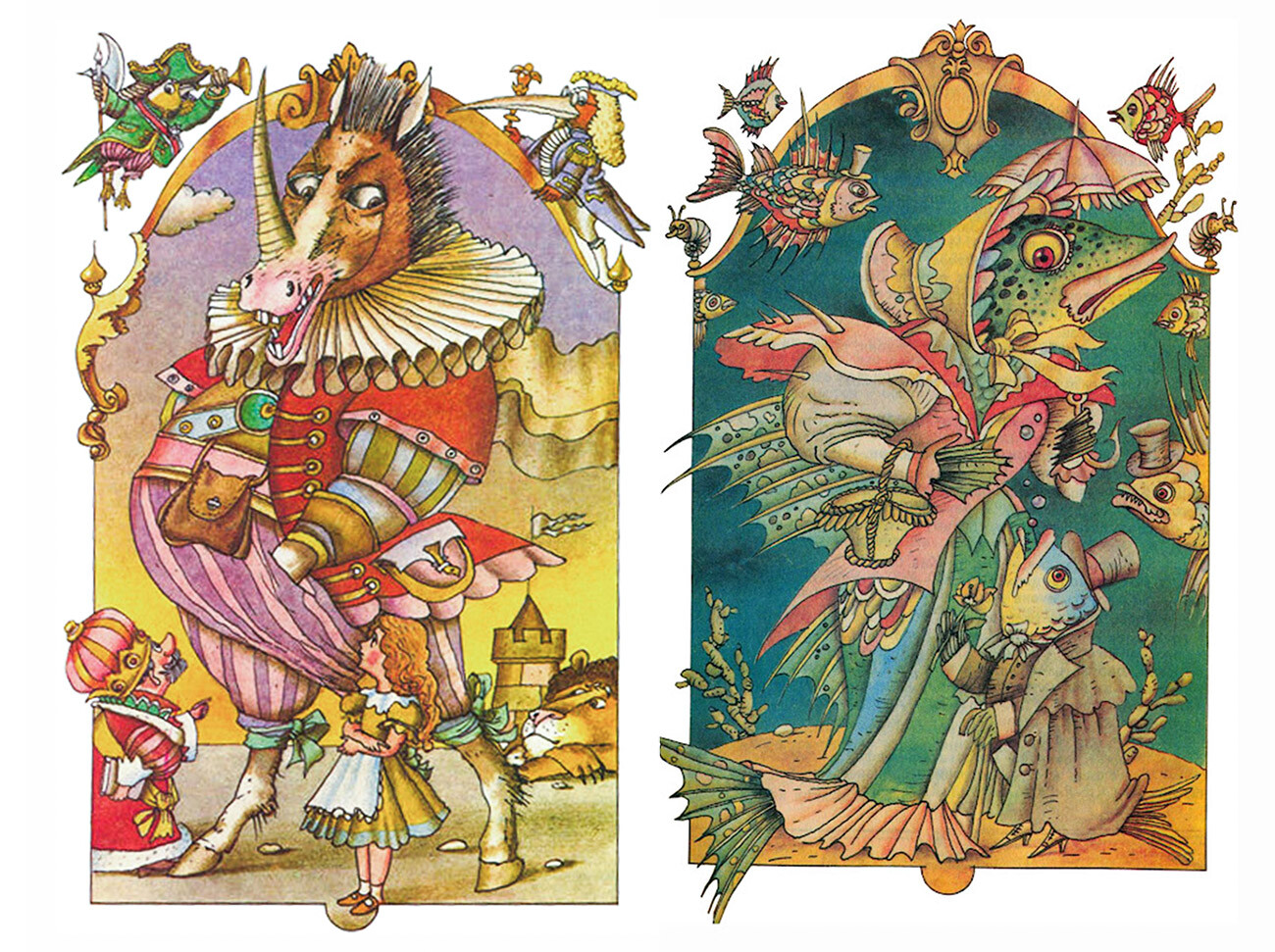
It was again Boris Zakhoder who translated Alan Milne’s book in the USSR. He himself called his work “a rendering”: it really turned out to be a free interpretation, in which Zakhoder missed out a couple of original chapters. His version was published in 1960, complete with illustrations by Alisa Poret.

Later on, the fairy tale came out with illustrations by Boris Diodorov and Gennady Kalinovsky.
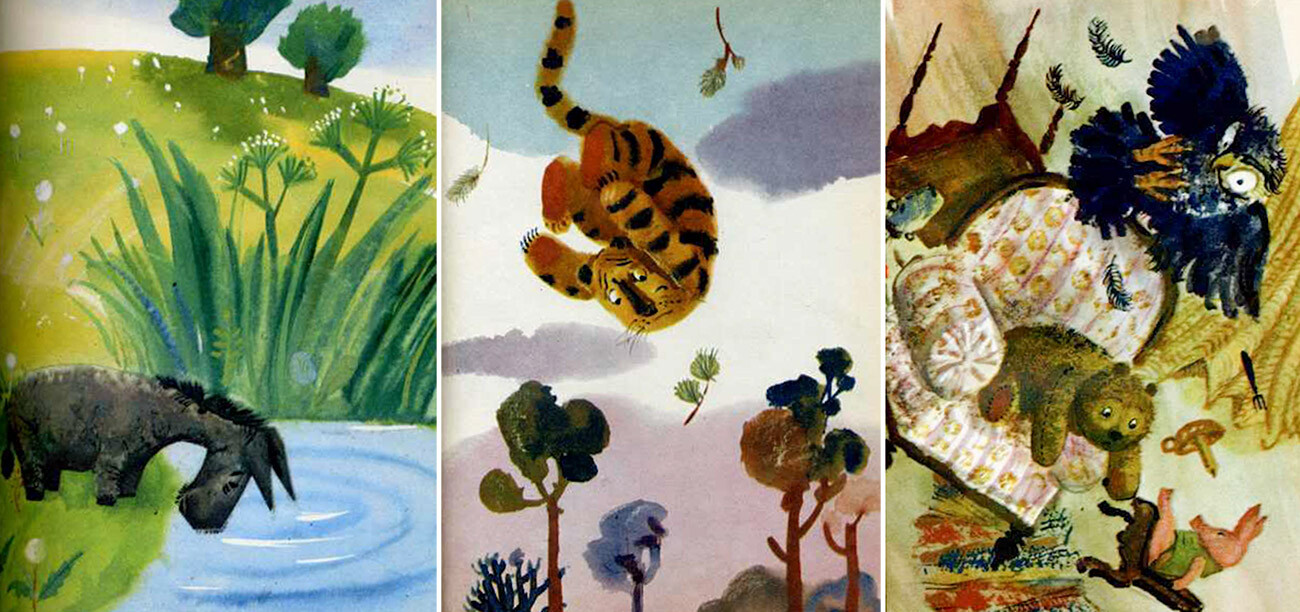
Leo Tolstoy himself came up with an adaptation for this popular English folk tale. He gave the bears names and included a new character in the story - a little girl who got lost in the woods. The tale swiftly grew popular and was published over and over again both before and after the 1917 Revolution.
In 1935, the fairy tale was illustrated by Yury Vasnetsov, the apprentice of well-known artists Kazemir Malevich and Kuzma Petrov-Vodkin.
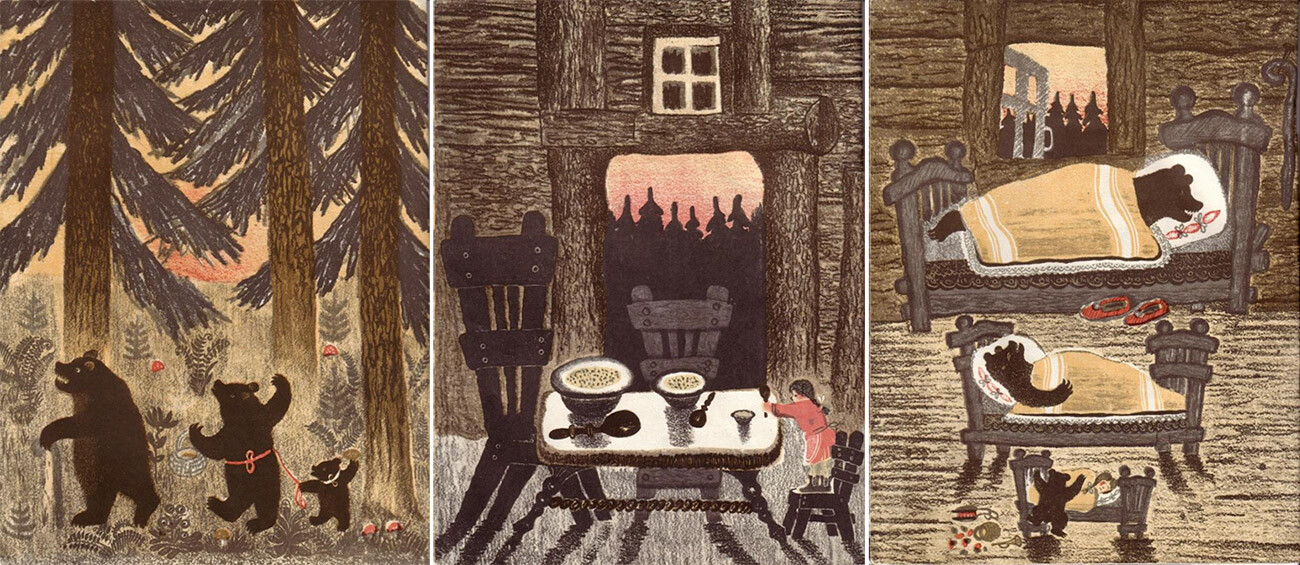
In 1977, a new edition saw the light of day. It was illustrated by Marina Uspenskaya, the leading illustrator of the popular kids’ magazine Murzilka back in the 1960s.

In 1989, the fairy tale was newly illustrated by Nikolay Ustinov.
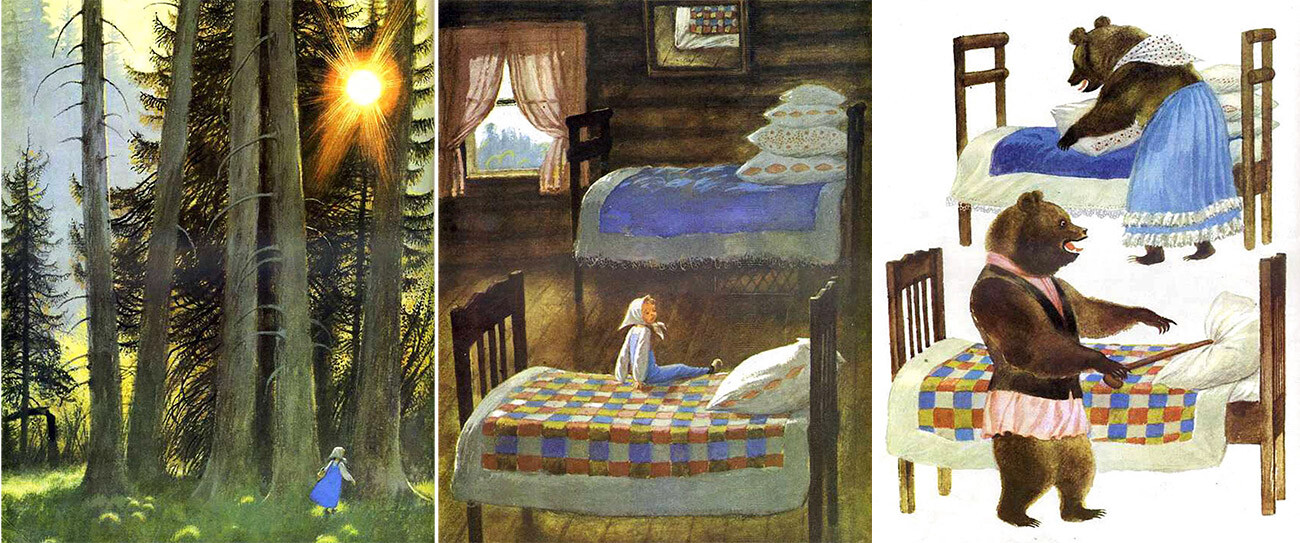
The folk tale was adapted in the USSR by well-known author Sergey Mikhalkov, back in 1936. In his version, the pigs have names - Naf-Naf, Nuf-Nuf and Nif-Nif, while the original thriller turned into a smooth story with a lesson at the end, in which both the pigs and the wolf stay alive.
The best illustrations for the tale were created in the 1970s, and more specifically, in 1976 by Eric Bulatov and Oleg Vasiliev.
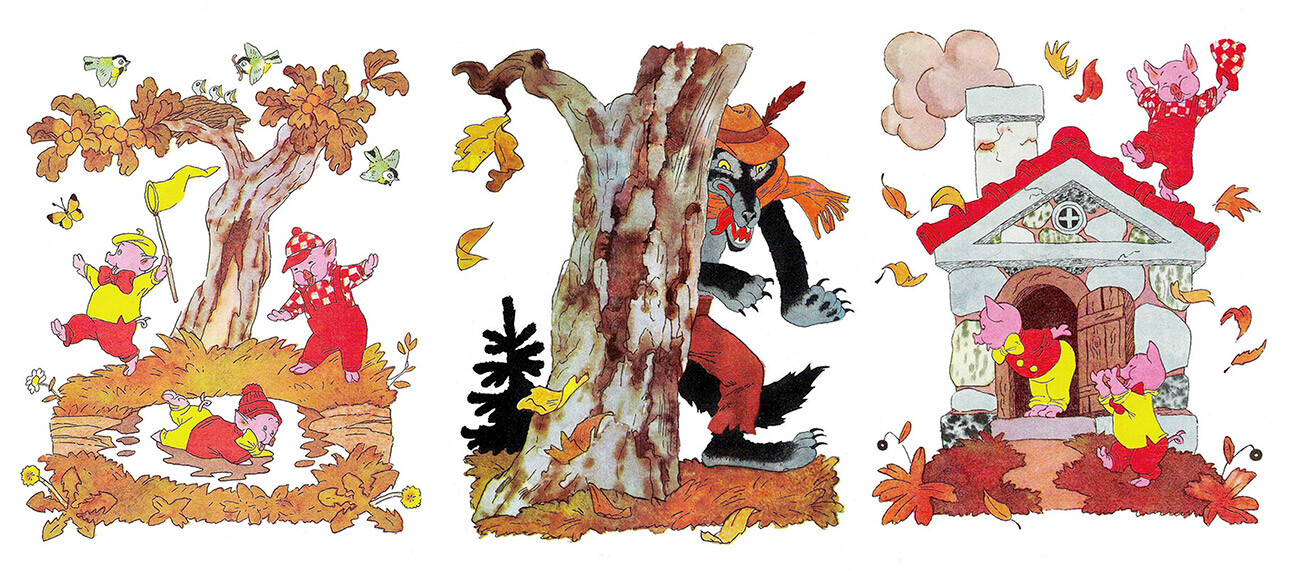
In 1978, the popular book was illustrated by Konstantin Rotov.

The first translation of Rudyard Kipling’s ‘The Jungle Book’ into Russian was done in 1905, but the book subsequently became more popular under the name ‘Mowgli’. Interestingly, in the Russian translation, Bagheera (a male in the original) turned into a female, since in Russian grammar, the word “panther” is feminine. This drastically transformed Mowgli’s and Bagheera’s relationship, replacing the male friendship with a mother-son bond. The book was twice illustrated by animalier Vasily Vatagin.
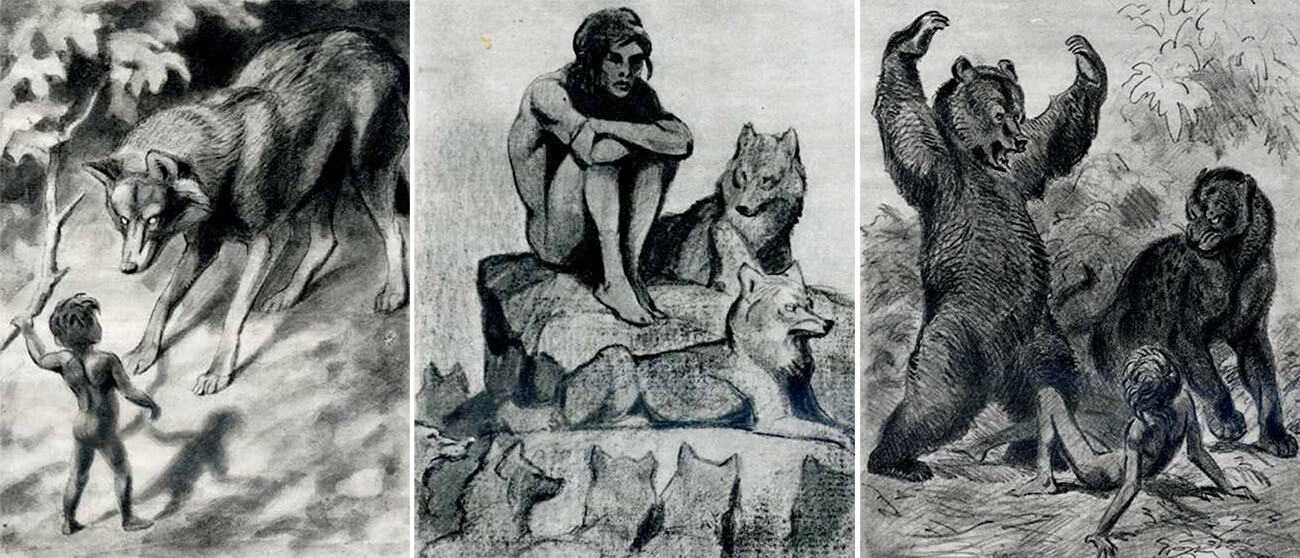
Mai Miturich’s illustrations of 1976 are totally different: he came up with much more abstract images for the book.
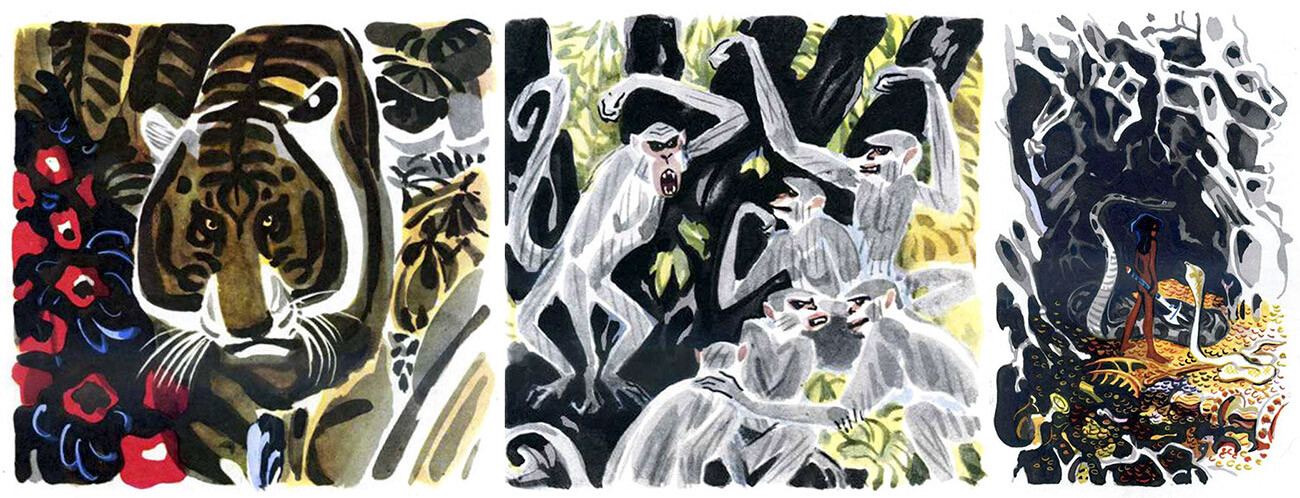
Dear readers,
Our website and social media accounts are under threat of being restricted or banned, due to the current circumstances. So, to keep up with our latest content, simply do the following:
If using any of Russia Beyond's content, partly or in full, always provide an active hyperlink to the original material.
Subscribe
to our newsletter!
Get the week's best stories straight to your inbox